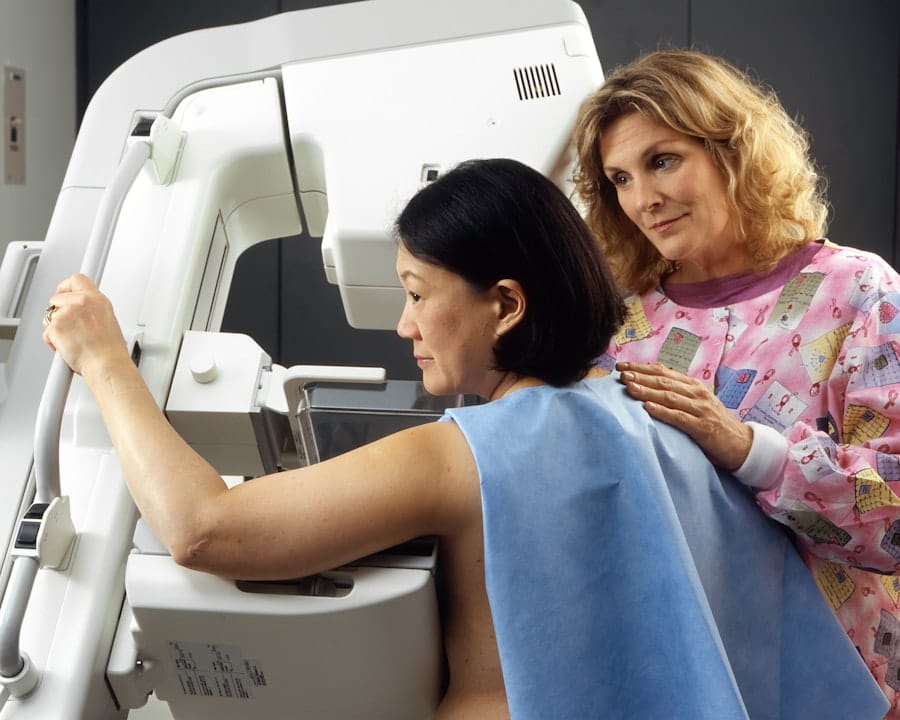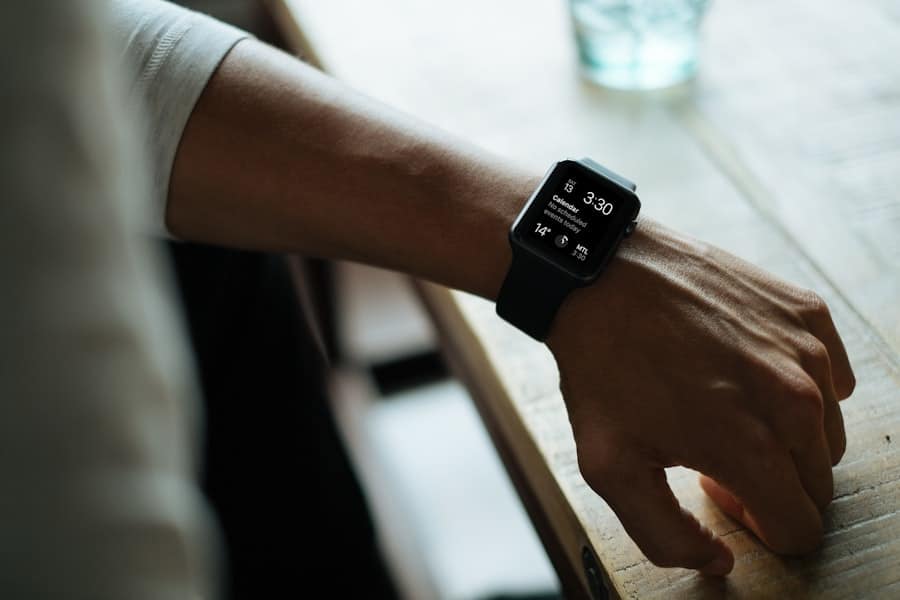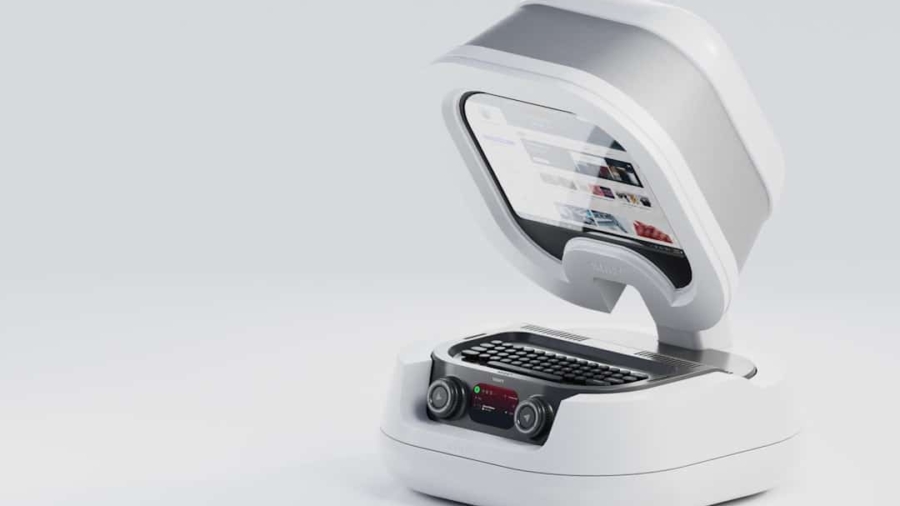Wearable glucose monitors represent a significant advancement in diabetes management, providing individuals with a continuous and real-time view of their blood glucose levels. These devices have emerged as a response to the growing need for more effective diabetes care, particularly as the prevalence of diabetes continues to rise globally. According to the International Diabetes Federation, approximately 537 million adults were living with diabetes in 2021, a number projected to increase to 643 million by 2030.
This alarming trend underscores the necessity for innovative solutions that empower patients to take control of their health. The evolution of glucose monitoring technology has transitioned from traditional fingerstick methods to sophisticated wearable devices that offer convenience and accuracy. Wearable glucose monitors utilize advanced sensors and algorithms to track glucose levels continuously, allowing users to make informed decisions about their diet, exercise, and medication.
This shift not only enhances the quality of life for individuals with diabetes but also fosters a proactive approach to managing the condition, ultimately leading to better health outcomes.
Key Takeaways
- Wearable glucose monitors are small devices that can be worn on the body to continuously track blood sugar levels.
- Advantages of using wearable glucose monitors include real-time monitoring, convenience, and the ability to detect trends and patterns in glucose levels.
- These monitors work by using sensors to measure glucose levels in interstitial fluid, which is then transmitted to a display device or smartphone for easy access.
- Wearable glucose monitors have a significant impact on diabetes management by providing valuable data for making informed treatment decisions and improving overall health outcomes.
- When compared to traditional glucose monitoring methods, wearable glucose monitors offer greater convenience, continuous monitoring, and reduced pain and discomfort for the user.
Advantages of Using Wearable Glucose Monitors
One of the primary advantages of wearable glucose monitors is their ability to provide continuous glucose monitoring (CGM), which offers a more comprehensive picture of glucose fluctuations throughout the day. Unlike traditional methods that rely on intermittent fingerstick tests, CGMs can track glucose levels every few minutes, allowing users to identify trends and patterns that may not be apparent through sporadic testing. This continuous data stream enables individuals to respond promptly to high or low glucose levels, reducing the risk of severe hypoglycemic or hyperglycemic episodes.
Moreover, wearable glucose monitors often come equipped with features that enhance user experience and engagement. Many devices are designed to sync with smartphones or other digital platforms, providing users with easy access to their glucose data through intuitive apps. These applications often include features such as alerts for high or low glucose levels, historical data tracking, and even integration with other health metrics like physical activity and dietary intake.
This holistic approach not only simplifies diabetes management but also encourages users to take an active role in their health.
How Wearable Glucose Monitors Work

Wearable glucose monitors typically utilize a small sensor inserted just beneath the skin, which measures interstitial fluid glucose levels. This sensor is often part of a larger system that includes a transmitter and a display device, such as a smartphone or dedicated monitor. The sensor continuously collects data on glucose levels, which is then transmitted wirelessly to the display device for real-time monitoring.
The technology behind these sensors can vary; some use electrochemical methods while others may employ optical techniques. The accuracy of these devices is paramount, as users rely on them for critical health decisions. Most modern wearable glucose monitors are designed to provide readings that closely correlate with traditional blood glucose measurements.
Calibration may be required initially, but many newer models are factory-calibrated, reducing the burden on users. Additionally, advancements in sensor technology have led to improved accuracy and reduced lag time between actual blood glucose levels and sensor readings, making these devices increasingly reliable for everyday use.
Impact on Diabetes Management
The introduction of wearable glucose monitors has revolutionized diabetes management by shifting the focus from reactive care to proactive health management. With continuous access to glucose data, individuals can make informed decisions about their lifestyle choices, such as adjusting their diet or modifying their exercise routines based on real-time feedback. This capability is particularly beneficial for those who experience frequent fluctuations in their blood sugar levels, as it allows for timely interventions that can prevent complications.
Furthermore, wearable glucose monitors have been shown to improve overall glycemic control. Studies indicate that individuals using CGM technology often achieve lower HbA1c levels compared to those relying solely on traditional monitoring methods. This improvement is attributed to the increased awareness and understanding of how various factors influence blood sugar levels.
As users become more attuned to their bodies’ responses, they can develop personalized strategies for managing their diabetes more effectively.
Comparison with Traditional Glucose Monitoring Methods
When comparing wearable glucose monitors with traditional glucose monitoring methods, several key differences emerge. Traditional methods typically involve fingerstick blood tests that provide a snapshot of blood glucose levels at a specific moment in time.
In contrast, wearable monitors offer continuous data that can reveal trends and patterns over time, providing a more comprehensive understanding of an individual’s glycemic profile. Additionally, the convenience factor cannot be overlooked. Traditional monitoring requires users to carry out multiple fingersticks daily, which can be painful and inconvenient.
In contrast, wearable monitors minimize discomfort by allowing users to check their glucose levels without invasive procedures throughout the day. This ease of use encourages more frequent monitoring and can lead to better adherence to diabetes management plans.
Challenges and Limitations of Wearable Glucose Monitors

Despite their numerous advantages, wearable glucose monitors are not without challenges and limitations.
While prices have decreased over time, many wearable glucose monitors remain expensive, and insurance coverage can vary widely.
This financial barrier may prevent some individuals from accessing this technology, particularly those who are already facing economic hardships due to medical expenses. Another challenge lies in the accuracy and reliability of readings. Although advancements have improved sensor technology, factors such as skin temperature, hydration levels, and sensor placement can affect accuracy.
Users may experience discrepancies between their CGM readings and traditional blood glucose measurements, leading to potential mismanagement of their condition if they rely solely on the wearable device without corroborating it with fingerstick tests when necessary.
Future Developments and Trends in Wearable Glucose Monitoring Technology
The future of wearable glucose monitoring technology is promising, with ongoing research and development aimed at enhancing device capabilities and user experience. One exciting trend is the integration of artificial intelligence (AI) and machine learning algorithms into these devices. By analyzing vast amounts of data collected from users, AI can help predict future glucose trends based on individual patterns and behaviors.
This predictive capability could enable users to anticipate fluctuations in their blood sugar levels before they occur, allowing for preemptive actions. Additionally, there is a growing interest in non-invasive monitoring technologies that aim to eliminate the need for skin penetration altogether. Researchers are exploring various methods such as optical sensors that use light to measure glucose levels through the skin or sweat analysis techniques that could provide insights into blood sugar levels without any discomfort.
If successful, these innovations could further democratize access to glucose monitoring technology and enhance user compliance.
Tips for Choosing the Right Wearable Glucose Monitor
Selecting the right wearable glucose monitor involves considering several factors tailored to individual needs and preferences. First and foremost, potential users should evaluate the accuracy and reliability of different devices by consulting reviews and clinical studies that assess performance metrics. It is essential to choose a monitor that has been validated against traditional blood glucose testing methods.
Another critical consideration is compatibility with existing technology. Many wearable glucose monitors offer smartphone integration through dedicated apps that provide insights into glucose trends and allow for easy data sharing with healthcare providers. Users should ensure that the device they choose is compatible with their smartphone operating system and offers features that align with their lifestyle needs.
Finally, it is advisable to consider factors such as comfort and ease of use when selecting a wearable glucose monitor. Some devices may require more frequent calibration or have specific placement requirements that could affect user experience. Engaging with healthcare professionals can also provide valuable insights into which devices may be best suited for individual circumstances based on medical history and lifestyle factors.
In conclusion, wearable glucose monitors represent a transformative approach to diabetes management, offering continuous monitoring capabilities that empower individuals to take charge of their health. As technology continues to evolve, these devices will likely become even more integral in managing diabetes effectively while addressing challenges related to accessibility and accuracy.
A related article to How Wearable Glucose Monitors are Transforming Diabetes Management is “Smartwatches Fossil Review 2023” which discusses the latest advancements in wearable technology. To read more about the future of smartwatches, check out the article here.
FAQs
What are wearable glucose monitors?
Wearable glucose monitors are small electronic devices that are worn on the body to continuously monitor glucose levels in individuals with diabetes. They provide real-time data on blood sugar levels, allowing for better management of the condition.
How do wearable glucose monitors work?
Wearable glucose monitors typically use a small sensor that is attached to the skin to measure glucose levels in the interstitial fluid. The sensor communicates with a receiver or smartphone app to display the data in real time. Some monitors also have alarms to alert the user of high or low glucose levels.
How are wearable glucose monitors transforming diabetes management?
Wearable glucose monitors are transforming diabetes management by providing continuous and real-time data on glucose levels, which allows for more proactive and personalized management of the condition. This can lead to better control of blood sugar levels and reduce the risk of complications.
Are wearable glucose monitors accurate?
Wearable glucose monitors have been shown to be accurate and reliable for monitoring glucose levels. However, it is important for users to calibrate the device as recommended by the manufacturer and to follow proper usage guidelines to ensure accurate readings.
Who can benefit from using wearable glucose monitors?
Individuals with diabetes, especially those who require frequent monitoring of their blood sugar levels, can benefit from using wearable glucose monitors. These devices can be particularly helpful for people who have difficulty managing their glucose levels with traditional methods such as fingerstick testing.

